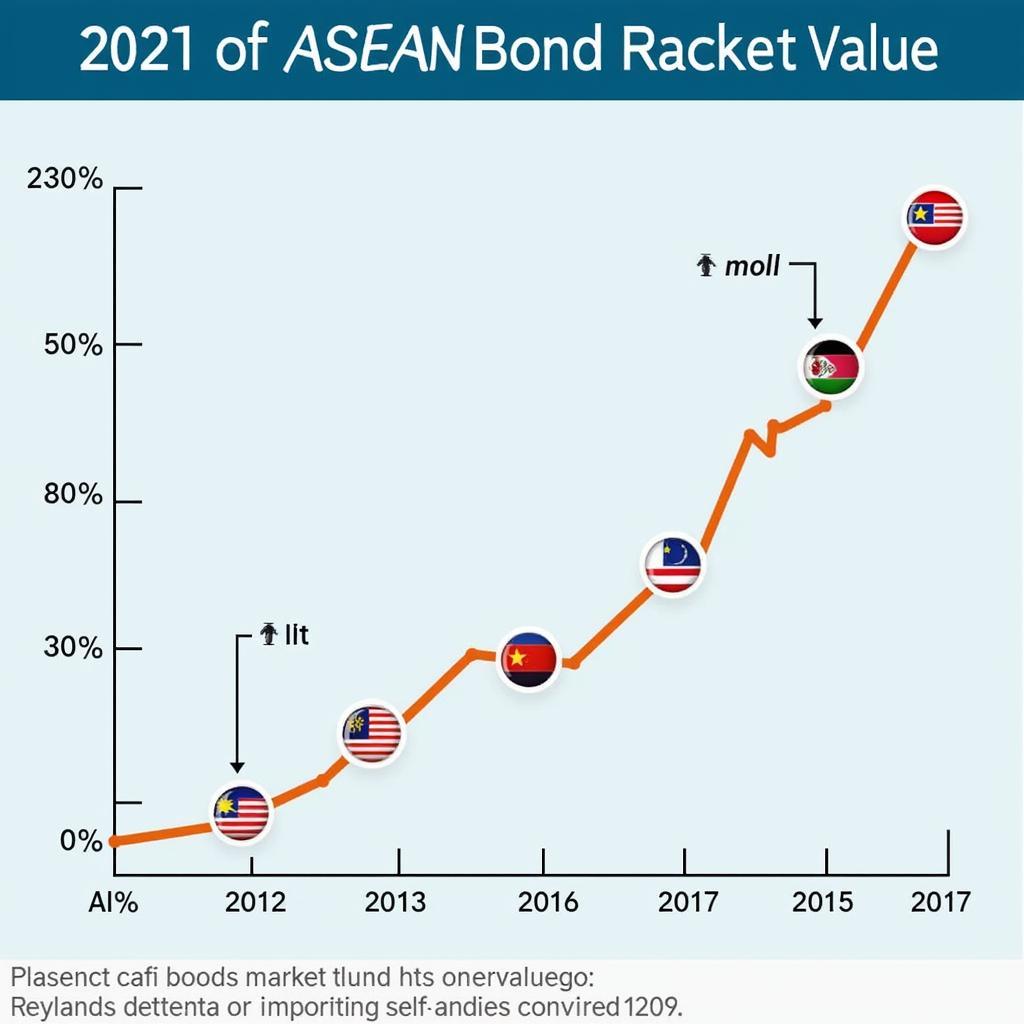The Asean Bond Market stands as a testament to the region’s commitment to economic integration and financial collaboration. Comprising both government and corporate bonds denominated in local currencies, this dynamic market presents compelling opportunities for investors seeking diversification and exposure to Southeast Asia’s growth trajectory.
 ASEAN Bond Market Growth Chart
ASEAN Bond Market Growth Chart
Understanding the ASEAN Bond Market Landscape
The ASEAN bond market encompasses a diverse range of issuers, instruments, and regulatory frameworks. Key players include:
- Governments: Sovereign bonds issued by ASEAN member states contribute significantly to market depth and liquidity. These bonds often serve as benchmarks for corporate issuances and offer investors a relatively low-risk entry point into the market.
- Corporates: A growing number of companies in ASEAN are tapping into the bond market to raise capital for expansion, infrastructure development, and other strategic initiatives. This segment offers investors exposure to a wider range of industries and risk-return profiles.
- Multilateral institutions: Organizations like the Asian Development Bank (ADB) play a crucial role in promoting bond market development through technical assistance, capacity building, and direct investments.
Drivers of Growth in the ASEAN Bond Market
Several factors contribute to the sustained growth and evolution of the ASEAN bond market:
- Robust Economic Fundamentals: ASEAN economies have consistently outperformed global averages, driven by a young and expanding workforce, rising middle class, and increasing urbanization.
- Infrastructure Development Needs: The region’s ambitious infrastructure development plans require significant funding, creating a natural demand for long-term capital that the bond market is well-positioned to meet.
- Financial Inclusion Initiatives: Efforts to enhance financial inclusion and deepen capital markets within ASEAN have led to regulatory reforms and initiatives that facilitate bond market growth.
- Regional Integration: The ASEAN Economic Community (AEC) blueprint outlines a vision for a single market and production base, fostering cross-border capital flows and harmonized financial regulations, further boosting bond market development.
Investment Opportunities and Considerations
For investors, the ASEAN bond market presents a compelling case for portfolio diversification and attractive returns. However, careful consideration of the following factors is crucial:
- Currency Risk: Fluctuations in local currencies can impact investment returns, especially for foreign investors. Hedging strategies should be explored to mitigate this risk.
- Liquidity: While liquidity has improved significantly, certain segments of the market, particularly corporate bonds, may exhibit lower trading volumes compared to more developed markets.
- Regulatory Landscape: Each ASEAN member state has its own regulatory framework governing bond issuances and trading, necessitating a thorough understanding of the specific rules and regulations in each jurisdiction.
Navigating the ASEAN Bond Market
“Understanding the nuances of the ASEAN bond market is paramount for investors seeking to capitalize on its potential,” says Lily Nguyen, Portfolio Manager at Dragon Capital. “Thorough due diligence, a long-term investment horizon, and a strategic approach to risk management are key to success.”
[asean 3 bond market guide 2017]
The Future of the ASEAN Bond Market
The ASEAN bond market is poised for continued expansion, driven by ongoing economic growth, infrastructure financing needs, and regional integration efforts. Key trends shaping the market’s future include:
- Sustainable Finance: Green, social, and sustainability bonds are gaining traction as investors increasingly prioritize environmental, social, and governance (ESG) factors.
- Technological Advancements: Fintech innovations are transforming the bond market landscape, enhancing transparency, efficiency, and accessibility for both issuers and investors.
- Harmonization of Regulations: Efforts to harmonize regulations across ASEAN will further enhance market integration and attract a wider pool of investors.
Conclusion
The ASEAN bond market represents a compelling investment destination for those seeking to tap into Southeast Asia’s growth story. With its robust economic fundamentals, infrastructure development pipeline, and commitment to regional integration, the market is well-positioned for continued growth and expansion. By understanding the unique characteristics, opportunities, and risks associated with the ASEAN bond market, investors can make informed decisions and potentially reap the rewards of investing in this dynamic region.
FAQ
What are the key risks associated with investing in the ASEAN bond market?
How can investors mitigate currency risk when investing in ASEAN bonds?
What role does the Asian Development Bank play in the ASEAN bond market?
What are some of the key trends shaping the future of the ASEAN bond market?
Where can I find reliable information and resources on ASEAN bond market data and regulations?
Need Help?
Contact us for 24/7 support:
Phone: 0369020373
Email: aseanmediadirectory@gmail.com
Address: Ngoc Lien Village, Hiep Hoa, Bac Giang, Vietnam.